Episode Description
This week we’re joined by Dina Capiello and Julio Friedmann to talk about the latest climate news. The IEA released its global warming emissions report for 2023, and emissions continue to rise, but at a slower rate than in previous years. Meanwhile, to better track those emissions, EDF launched its long-anticipated MethaneSAT on March 4th, a satellite that will measure methane pollution worldwide. And on March 6th the U.S. Securities and Exchange Commissions (SEC) released its final rules to require companies to disclose their climate risk.
Transcript
James Lawler: [00:00:00] Welcome to Climate News Weekly. I’m here with Dina Cappiello and Julio Friedmann. Welcome.
Dina Cappiello: So nice to be here and nice to see you.
Julio Friedmann: Great to see you again, having seen you just last week.
James Lawler: Yes. Great to finally meet you in person. We met in person at the University of California, Merced Roads to Removal event last week.
Julio was kind enough to join us on one of our panels and made great contributions to the conversation. So thank you so much for being there.
Julio Friedmann: My great pleasure.
James Lawler: We have a couple of stories to cover this week. We will start with the IEA’s report, which came out last week. And this report is an annual publication that shares, among other things, carbon dioxide emissions for the year in question.
So Julio, what did the report tell us about our emissions and our rate of emissions globally?
Julio Friedmann: So the name of this report was CO2 Emissions in 2023. It takes a little bit of time after the end of the year to really sum it all up and figure it out. [00:01:00] And so every year, the IEA releases the actual numbers and they did that on Friday and punchline: emissions are up again.
There was an overall global rise of emissions of 1.1 percent. Some of that is associated with the rebound from COVID, which is still happening. Some of that was associated with drought. And in fact, there was a lot of drought this year. That meant that there was less hydropower and when there’s not enough hydropower, that is commonly made up then with fossil, either coal or gas.
And in particular, Chinese hydropower was down. And so there was a lot more Chinese coal that was used to keep the grid stable.
James Lawler: And Julio, what did it say about the rate of growth? So emissions have been growing year over year. How quickly?
Julio Friedmann: Right. So again, it grew 1.1 percent this year. The bad news story is it grew.
The good news story is it grew slower than prior years. And part of the good news [00:02:00] story here is, in fact, that clean energy is limiting the growth of fossil emissions, that the penetration of variable renewables, the build out of EVs and battery storage and all these other sorts of things seems to be having an effect.
And the IEA measured that and basically we’re able to quantify how bad it would have been in the absence of the recent clean energy build out and they had it more like a two and a half percent growth if we hadn’t done the things we’ve done in the last few years in terms of clean energy deployment.
James Lawler: What, what is driving the growth of emissions primarily right now?
Julio Friedmann: Unsurprisingly, economic development in most places, most places is mostly Asia, but it’s not exclusively Asia. And in Asia, it’s not just China, it’s South Asia. So a lot going on in India to a lesser extent, Pakistan and a lot going on in Southeast Asia, in particular, Vietnam, Malaysia, Indonesia, [00:03:00] these are the big emitters.
Uh, and it’s important because people forget how big that stuff is. It is big. It’s enough to move the emissions of the world. So even when Europe is in decline and America’s in decline, Southeast Asia, coal grows, and that’s the balance.
James Lawler: So we want to pivot to a story that was pretty visible this week is a big story on the launch of MethaneSAT, which is a methane-tracking satellite that has been developed by the Environmental Defense Fund. And it launched into space on Monday, March 4th aboard a SpaceX rocket, and the promise of this satellite is to deploy imaging technology that can detect down to three parts per million methane from point sources.
And the E.D.F. has arranged a partnership with Google and their cloud computing infrastructure to essentially process the terabytes upon terabytes of data streaming off [00:04:00] of this satellite as it orbits the Earth 15 times a day to determine where exactly these, these methane leaks are happening down to pretty high levels of resolution.
Before we get started, you mentioned that RMI has had a, has had a role in this project and, and it actually attended the launch of the SpaceX rocket that shot this thing out into, into orbit. Can you tell us a little bit more about the program and, you know, about the launch, if, if you can?
Dina Cappiello: Yeah, yeah, this was led by our partners, Environmental Defense Fund, but we were really psyched to be- have a person there.
It was a managing director for us, Josh Henretig, who leads our data and transparency work, right? And that’s where our methane work is housed. So we also do a lot on methane being a very potent greenhouse gas and from the oil and gas sector. So, he was blown away and sent videos, you know, over our internal channels, et [00:05:00] cetera.
And really what this is going to do is going to make it very empirical where, along the oil and gas chain, the leaks are happening. So there has been- we have a lot of different satellites that are monitoring pollution and plumes, but the level of the specificity on one, on this one is, is much more, much more detailed.
James Lawler: What do you make of this, Julio?
Julio Friedmann: There’s two things that are going to come out of this. One of them is there’s just going to be no place to hide. If you are a methane emitter, you’re going to be found. The purpose of this is not shame, it’s discovery. And the most proactive oil and gas companies, including the 54 that signed on to the methane agreement at COP28, already understand this.
And they are already celebrating MethaneSAT because they know there’s no place to hide that gives them a good reason to be more proactive and to differentiate themselves in the marketplace. The other thing about constant [00:06:00] coverage means that you can discover super emitters.
James Lawler: What’s that?
Julio Friedmann: Super emitters are something we’ve only gotten our hands around recently.
That is when one facility, in an irregular fashion, like once a month or something, will release a very large volume of methane. So it is, it is because of some failure or some operational conceit, and it’s not part of regular practice, but then suddenly, boom, this huge amount of methane enters the atmosphere.
And the super emitters are probably half global methane emissions and the work that’s been done on MethaneSAT to get it ready has discovered a bunch of these things. Now we have global coverage, suddenly we’re going to start finding super emitters. That gives us again, not an opportunity to shame, but an opportunity to manage.
You can call the operator on the phone and go, “Hey, did you know your, your facility did this? You have a chance to fix it. If not, you have a chance to be paying fines. Maybe you’d rather fix it, right?”. So it’s actually meant to actually encourage good behavior and to solve the problem on its face. [00:07:00]
It’s not about shaming or punishing. It’s about fixing and it starts with good data.
Dina Cappiello: And what’s so interesting about that is, you know, another news clip this week was the SEC rules, the Securities and Exchange Commission, which, you know, they rolled back some disclosures, right? Mostly around the ones that they’re not directly responsible for, but their suppliers and their producers are.
And what I thought was so interesting about that is, yes, okay, you may not want to report it, but there is now a network of satellites, including this new one, MethaneSAT, that are going to be able to see it regardless of whether you want to tell people or not, right?
James Lawler: Right.
Dina Cappiello: And that has always been an issue- which is companies don’t want to disclose it.
And we also know that they’re vastly underreporting it.
James Lawler: Let’s talk about the SEC for a second and what its purpose is. So the Securities and Exchange Commission, SEC exists for the purpose of creating [00:08:00] a fair and stable, uh, market for securities in the United States. So they exist for the purpose of investors, right?
So that there is adequate disclosure to investors of risks that might be associated with transaction of securities. The question then before the SEC and their rule, their rulemaking body is what material risks are there that companies should disclose as it pertains to climate and to emissions. And so I think it’s interesting to think about this risk.
It’s like the reason this is a risk, the reason emissions are a risk is that they might be a liability for the company at a future date, that’s why. And so this question about scope three, which again, scope three refers to upstream and downstream emissions, you know, are so complex.
Julio Friedmann: Right. So let me, let me do a quick example to sort of focus this.
Let’s say you’re making a car. Okay? Your scope one emissions are the emissions from your factory.
James Lawler: Right.
Julio Friedmann: So the thing that [00:09:00] makes the car, your scope two emissions, the electricity that goes into your factory. But your scope three emissions are the emissions from the steel and aluminum and plastic that go into the car.
And they’re also the scope, three emissions from the use of the car. So that includes the gasoline and diesel emissions that come out of a tailpipe. So for something like a car, it’s pretty darn complicated. For something like apparel, it’s almost impossible trying to figure out what the scope three emissions for something like this actually are.
I do want to point the listeners to the SEC announcement because they do in fact require a lot in terms of disclosure of climate related risks.
James Lawler: Right, exactly. Can you share with us what we can glean from that development?
Julio Friedmann: Sure. A couple of things, one of them is that there is a big pivot away from mandatory reporting and a big pivot towards voluntary reporting, right?
In particular, people hope that scope one and scope two emissions would be required to be mandatory. And the point of [00:10:00] fact, it looks like that is not the case. Um, it also looks like scope three emissions reporting are not necessarily required at all. Even, even necessarily as a voluntary measure, although obviously companies can choose to report that.
For what it’s worth, most companies that I know and work with actually do that. They actually do their scope one, two, and three emissions tracking with reasonably high fidelity. For those of you playing this game at home, scope three is really hard to count.
James Lawler: Right.
Julio Friedmann: There’s a lot of disagreement on exactly how you do it.
So the fact the SEC didn’t require that, I’m kind of fine with. The question is, should they have required scope one and two emissions reporting or not? I want to start by saying reasonable people can disagree with that. There’s a good case to be made for mandatory requirements. If you can’t monitor it, if you can’t measure it, you can’t manage it.
And we’ve got to start by having data and information, so requiring everybody to do this is a reasonable thing to ask. [00:11:00] It is the lowest level of disclosure. It is also the case that many groups really don’t have the wherewithal to do this. Many companies would have a very hard time executing this. This is one of the cases that the chamber of commerce was making.
They’re like, “Sure. If you’re a fortune 100 company, you can do this. But if you’re, you know, Joe’s Fishery and Grill, it will be hard for you to do this”. And even companies that are a, say a thousand employees or something, it’s actually hard to do the reporting. Well, do we really want to require it?
James Lawler: Right.
Julio Friedmann: My hope is that the SEC will start gathering enough data from this process that they can start setting good mandatory requirements in the near future. Yeah, I don’t think this is going to be the last time we hear this discussion. The SEC is going to keep getting into this year after year.
James Lawler: Yes, indeed.
It’s going to be very exciting to watch. Well, thank you for your time today. I think that’s it for today’s episode. I appreciate you joining us as always. And that covers it for this week’s Climate News Weekly. Thanks for listening and we’ll see you next week.[00:12:00]

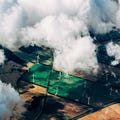





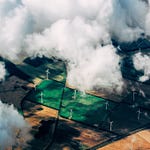
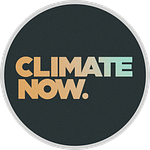
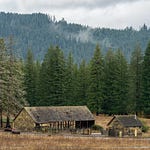
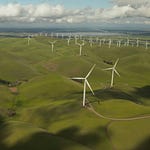
Climate News Weekly: MethaneSAT and the SEC